 |
My personal reason why these are my heroes and influenced my life. I choose to keep them private.
|
 |
And there ain't nothing quite as sad
As watching your heroes die
One by one as they fall
Soon there'll be no heroes at all!
Who's going to fill their shose?
|
 |
|
 For God so loved the world, that he gave his only begotten Son, that whosoever believeth in him should not perish, but have everlasting life.... John 3:16 For God so loved the world, that he gave his only begotten Son, that whosoever believeth in him should not perish, but have everlasting life.... John 3:16
"Yet a little while, and the world seeth me no more; but ye see me: because I live, ye shall live also.... John 14:19 |
|
|
 |
|
|
 |
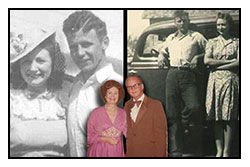 Dad was a very hard worker always doing something and doing it very well. I can remember watching him build a project with no plans or supply list. When he would start a project, he always had the blueprint in his head. I was always amazed when he finished the job, there were no scraps. It didn’t matter if it was concrete work, brick, carpentry or metal, dad knew how to do Dad was a very hard worker always doing something and doing it very well. I can remember watching him build a project with no plans or supply list. When he would start a project, he always had the blueprint in his head. I was always amazed when he finished the job, there were no scraps. It didn’t matter if it was concrete work, brick, carpentry or metal, dad knew how to do
it all. Read more.....>>>>
Mom was an incredible lady, and always dressed to the nines. She was the glue that held the family together. As a child growing up, I remember for
breakfast shealways made biscuits and gravy, bacon, sausage, eggs, pancakes and oatmeal. I guess with four boys she wanted to make sure we all ate and were satisfied. Read more.....>>>> |
|
 |
|
 What can I say about my brothers. I was very blessed to have my brother Ray, Don, and Jerry. From Ray rescuing me from a cliff in Apple Valley California. And, watching him being able to do anything. Don for spending time with him in a patrol car keeping citizens safe. And Jerry being there when I got in trouble and getting me out of in. Having a bedroom that was named THE J&L RANCH. What can I say about my brothers. I was very blessed to have my brother Ray, Don, and Jerry. From Ray rescuing me from a cliff in Apple Valley California. And, watching him being able to do anything. Don for spending time with him in a patrol car keeping citizens safe. And Jerry being there when I got in trouble and getting me out of in. Having a bedroom that was named THE J&L RANCH.
They all cast a large shadow for me to live up to. I found it was very hard to walk in their shoes. However , I did out rank them in the military. |
 |
|
 |
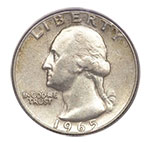 Us, Boys spent many - many quarters on this ride and others. When Don went into the Air Force Dad kept us out of school and we spent the whole day there. Us, Boys spent many - many quarters on this ride and others. When Don went into the Air Force Dad kept us out of school and we spent the whole day there. 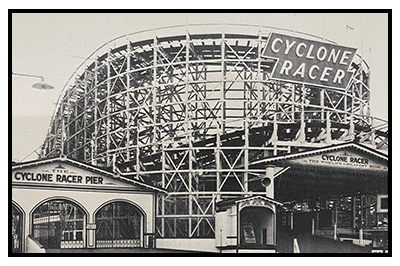
When the amusement pier opened in Long Beach in 1902, a roller-coaster and other rides had already been operating at the location. By late 1954, the Long Beach Pike was the leading amusement attraction in the Los Angeles area and the fifth largest in the United States. The Pike drew tens of thousands of summer visitors to its roller coaster, merry-go-round, bathhouse, two pavilions, band shell, and many other smaller attractions. At its peak, it featured 218 concessions.
The year 1955 was a watershed for The Pike. That year, Disneyland opened. The Pike quickly began losing visitors to the instantly popular newly-opened theme park, just 17 miles away in Anaheim. The new "summer-long county fair" amusements introduced at Knott's Berry Farm in Buena Park also drew visitors away. Walt Disney was said to have used The Pike as an example of the seedy amusement zone atmosphere that he meant for Disneyland to replace. Ironically, Disney's Paradise Pier (now Pixar Pier) in the California Adventure Park was an attempt to replicate the seaside arcade atmosphere of the Pike. By 1966, the Pike's famous Cyclone Racer Roller Coaster (larger than New York's Coney Island Cyclone) had closed. What was left of the original Pike finally closed in 1979.
In 2003, after decades of waterfront redevelopment, Long Beach reopened a new (although less exciting) version of The Pike called The Pike at Rainbow Harbor, featuring restaurants, shops, movie theaters, and a Ferris wheel. |
|
 |
|
|
|
 |
|
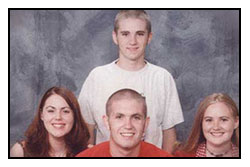 I was very blessed to have four wonderful children Amy, Aron, Alisa, and Adom. They all grew up to have wonderful families and I couldn’t be prouder of all of them. Ten wonderful grandchildren. I was very blessed to have four wonderful children Amy, Aron, Alisa, and Adom. They all grew up to have wonderful families and I couldn’t be prouder of all of them. Ten wonderful grandchildren. |
|
 |
|
|
 |
|
| Vicki Nichols, I met her in my 10th grade of high school. She was my 1st love and somehow always in my thoughts from the day we met even now! We were together all through High School and part of my Army life. I lost contact with her after I can home from the Army. Years later I saw her sister Kathy and she informed me that she passed away from cancer. That was a very sad day for me! |
|
 |
|
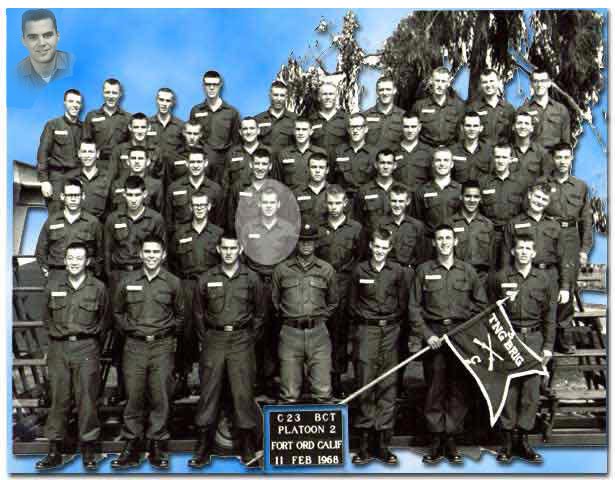 |
 |
|
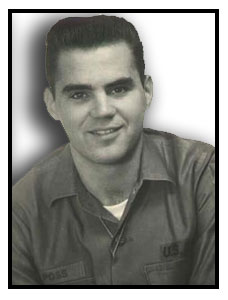 In 1968, Americans were asking, "Do you know the way to San
Jose?" as Diane Warwicke serenading this great land of ours
with her songs. I never made it to San Jose, but Uncle Sam
showed me the way to Fort Ord, California. In 1968, Americans were asking, "Do you know the way to San
Jose?" as Diane Warwicke serenading this great land of ours
with her songs. I never made it to San Jose, but Uncle Sam
showed me the way to Fort Ord, California.
For the next eight weeks, my time was taking up with learning
to be a good maggot, running with a full pack, kissing the
dirt, counting in a system Dewey-Decimal never dreamt of:
"Up One, Two, Three, Four." Drilling, with training tacked
onto it, was the mainstay. Oh yes, I learned a new name, "JODY."
It seemed my girl's pledge of eternal love lasted until this
guy named Jody showed up. He had my girl at home, and I could
only image what they were doing together. Just turned 18,
and even thought of going to see the Chaplin...but he came
to us instead. To hear his inspirational words of loving support [send the children out of the room], click here (19K), here (120K), and here (69K). |
 |
| Army Marching Cadence |
 |
(DI) Your Left Youre Right... Left Right Left Right... (Boots - [Maggot] Repeats)
(DI) You never get home when your Left... Your Right... (Boots - [Maggot])
(DI) Your Left Youre Right... Left Right Left Right... (Boots - [Maggot] Repeats)
|
 |
(DI) Hey, De high De Oh... (Boots - [Maggot] Repeats)
(DI) Up the hill... The way we go... (Boots - [Maggot] Repeats)
(DI) Forty inches all around... (Boots - [Maggot] Repeats)
(DI)That The Ft Ord special... (Boots - [Maggot] Repeats)
(DI) What a crazy sound... (Boots - [Maggot] Repeats)
(DI) Up - One, two, three, four... (Boots - [Maggot] Repeats) |
|
 |
| Read More Cadence ---->>> |
 |
|
 |
 |
|
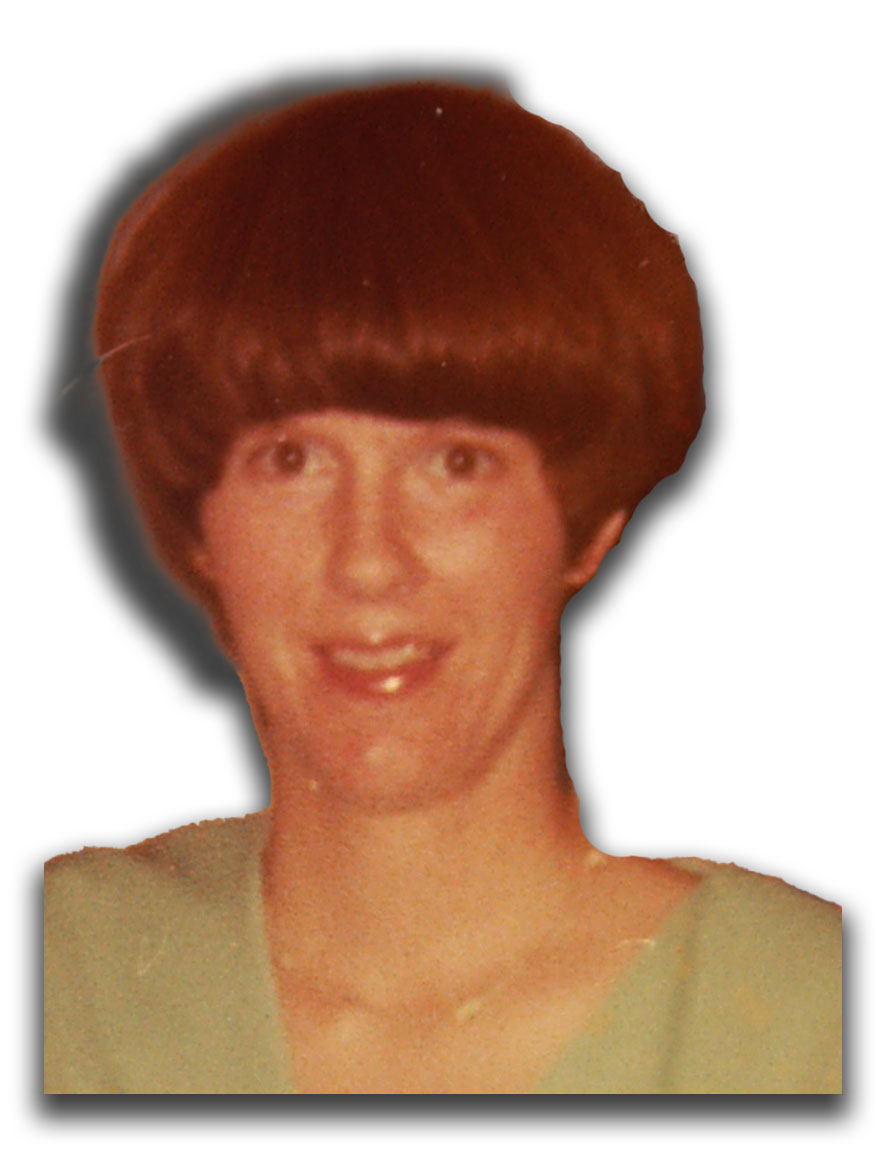 I thought from the day I saw her I noticed her humor and her love for life. Andi was my 1st only wife although we got a divorce, she had been a wonderful mother to our children. I watch her conquering nursing school and become a wonderful nurse. We had four wonderful children together, each of our children was very much wanted in our lives. Andi wherever you are I wish you the best of luck and love. I thought from the day I saw her I noticed her humor and her love for life. Andi was my 1st only wife although we got a divorce, she had been a wonderful mother to our children. I watch her conquering nursing school and become a wonderful nurse. We had four wonderful children together, each of our children was very much wanted in our lives. Andi wherever you are I wish you the best of luck and love. |
|
 |
 |
|
 Ann came into my life in the late 80’s. Our friendship goes with out saying. Ann is one of a kind. Her love for family and God is what make her stand out among others. Ann passion for the well-being of others is unmatchable. Ann came into my life in the late 80’s. Our friendship goes with out saying. Ann is one of a kind. Her love for family and God is what make her stand out among others. Ann passion for the well-being of others is unmatchable.
She loves being with her grandchildren and she can shake up a dance floor with her Two Stepping. I couldn’t see myself growing old with anyone else. |
 |
|
|
|
 |
|
|
 |
Abraham Lincoln
 I was born February 12, 1809 in Hardin County, Kentucky. My father removed from Kentucky to what is now Spencer County, Indiana in my eighth year. There, I grew up. My mother, who died in my tenth year, was of a family of the name of Hanks. I went to A-B-C schools by littles. I was born February 12, 1809 in Hardin County, Kentucky. My father removed from Kentucky to what is now Spencer County, Indiana in my eighth year. There, I grew up. My mother, who died in my tenth year, was of a family of the name of Hanks. I went to A-B-C schools by littles.
I think that the aggregate of all my schooling did not amount to one year. What I have in the way of education, I have picked up. At twenty-one, I came to Illinois. At New Salem, I studied what I should do. Thought of learning a blacksmith trade. Thought of trying to study law. I borrowed law books, took them home, and went at it in good earnest. In the autumn of 1836 I obtained a law license, removed to Springfield, and commenced practice. In 1854, the law profession had almost superseded the thought of politics in my mind, when the repeal of the Missouri Compromise aroused me as I have never been before. What I have done since then is pretty well known. A. Lincoln.
"Great Moments With Mr. Lincoln"
Script © The Walt Disney Company
Read more......>>> |
 |
|
|
 |
|
|
 |
 Asa "Al Jolson" Yoelson Asa "Al Jolson" Yoelson
(May 26, 1886 – October 23, 1950)
Al was an acclaimed American singer and actor whose career lasted from 1911 until his death in 1950. He was one of the most popular entertainers of the twentieth century whose influence extended to other popular performers, including Bing Crosby and Eddie Fisher.
Jolson is best known today for his appearance in one of the first "talkies," The Jazz Singer, the first feature film with sound to enjoy wide commercial success, in 1927. Performing the song "Mammy" in blackface, Jolson ad-libbed his signature catchphrase, "You ain't heard nothing yet!" Along with being one of the supreme performers of the vaudeville stage, Jolson was also the first musical artist to sell over 10 million records. Although Jolson's legacy has been somewhat controversial due to his use of stage blackface, his work is being re-appreciated for capturing the roots of minstrelry shows and the classic popular songs of his era.
Read more....>>>> |
 |
|
 |
The Jazz Singer stars entertainment legend Al Jolson in a story that bore a few similarities to his own life story. Jolson portrays a would-be entertainer whose show-business aspirations conflict with the values of his rabbi father (Warner Oland). Jolson found the challenge of conquering the screen via the new VITAPHONE technology irresistible, so he headed to Hollywood and began work on The Jazz Singer at a fervent pace. Only a few months later, his labors resulted in the creation of an indelible piece of motion picture history.
There was never any intention to have dialogue in the film, but during his first vocal performance, Jolson improvised the words: "Wait a minute, wait a minute, you ain't heard nothin' yet!"
But after Jolson uttered his now famous line, the rest was history. Less than two years later, nearly 8,000 theaters were wired for sound. The Jazz Singer created the momentum for “talking pictures” that couldn’t be stopped and silent films would soon become virtually extinct. |
 |
|
|
 |
|
|
 |
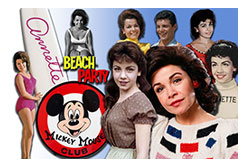 Annette Funicello Annette Funicello
(October 22, 1942 – April 8, 2013)
“I have said countless times, 'I owe everything to those ears,' and I mean it.
Annette Funicello is an American singer and actress known for her starring roles on Walt Disney's The Mickey Mouse Club and in the Beach Party film series.
After dancing the lead in Walt Disney's production of Swan Lake at the Starlight Bowl in Burbank, California, in 1955, Funicello was invited by Disney to audition for his new children's show, The Mickey Mouse Club. She landed a part on the show, which premiered in October 1955, when Funicello was just 13 years old, and soon became the series' the most popular "Mouseketeer." Audiences regularly tuned in to watch Funicello and other members of the children's variety show perform song and dance routines in turtle-neck sweaters displaying their names in big block letters, blue skirts/slacks and, most notably, mouse-eared beanies.
Read more....>>> |
 |
|
|
|
 |
|
|
 |
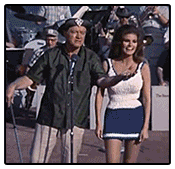 Leslie Townes "Bob" Hope (May 29, 1903 – July 27, 2003) was a British-born. Leslie Townes "Bob" Hope (May 29, 1903 – July 27, 2003) was a British-born.
American comedian, centenarian, actor, entertainer and producer with a career that spanned nearly 80 years and achievements in vaudeville, network radio, television, and USO Tours. He appeared in more than 70 short and feature films, starring in 54. These included a series of seven Road to... musical comedy fillms with long-time friend Bing Crosby as his partner.
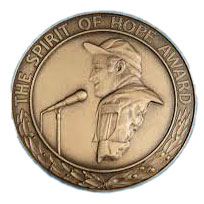 Presenting the Distinguished Service Medal to Hope in 1946, Past National Commander John R. Quinn called the entertainer "the personal jester of every man and woman in uniform ... Wherever they were - in foxhole, Quonset hut, jungle or warship - he administered the toxin of cheer and laughter. ... He has flown one-half million miles to perform in the din of the front lines as well as in the hush of hospitals." Presenting the Distinguished Service Medal to Hope in 1946, Past National Commander John R. Quinn called the entertainer "the personal jester of every man and woman in uniform ... Wherever they were - in foxhole, Quonset hut, jungle or warship - he administered the toxin of cheer and laughter. ... He has flown one-half million miles to perform in the din of the front lines as well as in the hush of hospitals."
Read more.....>>>>
|
 |
|
|
 |
|
|
 |
 Charles Hardin Holley (September 7, 1936 – February 3, 1959), known as Buddy Holly, was an American singer and songwriter who was a central and pioneering figure of mid-1950s rock and roll. He was born to a musical family in Lubbock, Texas, during the Great Depression, and learned to play guitar and sing alongside his siblings. Holly's style was influenced by gospel music, country music, and rhythm and blues acts, which he performed in Lubbock with his friends from high school. Charles Hardin Holley (September 7, 1936 – February 3, 1959), known as Buddy Holly, was an American singer and songwriter who was a central and pioneering figure of mid-1950s rock and roll. He was born to a musical family in Lubbock, Texas, during the Great Depression, and learned to play guitar and sing alongside his siblings. Holly's style was influenced by gospel music, country music, and rhythm and blues acts, which he performed in Lubbock with his friends from high school.
Read more.....>>>>
|
 |
|
|
 |
|
|
 |
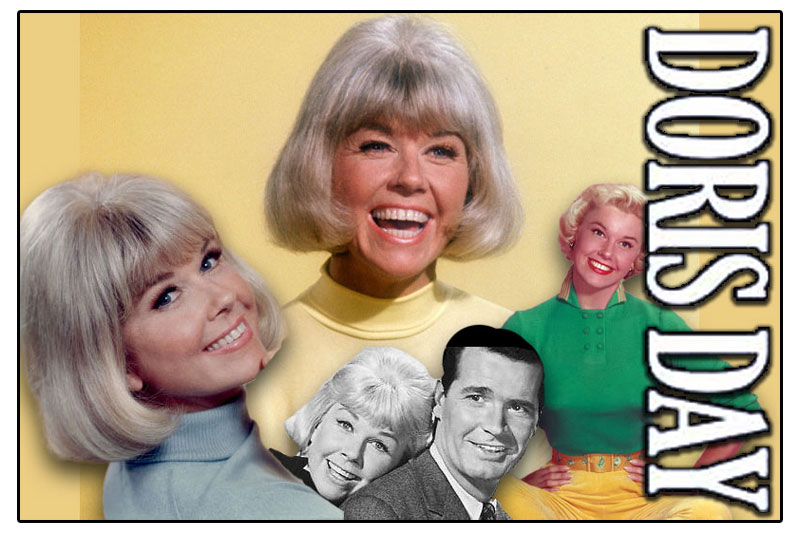 Doris Day (born Doris Mary Anne Kappelhoff; April 3, 1922 – May 13, 2019) Doris Day (born Doris Mary Anne Kappelhoff; April 3, 1922 – May 13, 2019)
Ms. Day began her career as a big-band vocalist, and she was successful almost from the start: One of her first records, “Sentimental Journey,” released in 1945, sold more than a million copies, and she went on to have numerous other hits.
The bandleader Les Brown, with whom she sang for several years, once said, “As a singer Doris belongs in the company of Bing Crosby and Frank Sinatra.”
But it was the movies that made her a star.
Read more.....>>>> |
 |
|
 |
| President Medal Of Freedom |
|
|
 |
 |
|
|
 |
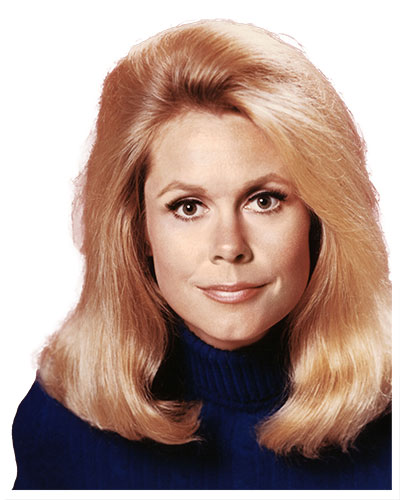 Elizabeth Victoria Montgomery (April 15, 1933 – May 18, 1995) was an American actress whose career spanned five decades in film, stage, and television. She portrayed the good witch Samantha Stephens on the popular television series Bewitched, which earned her five Primetime Emmy Award nominations and four Golden Globe Award nominations. Elizabeth Victoria Montgomery (April 15, 1933 – May 18, 1995) was an American actress whose career spanned five decades in film, stage, and television. She portrayed the good witch Samantha Stephens on the popular television series Bewitched, which earned her five Primetime Emmy Award nominations and four Golden Globe Award nominations.
Montgomery suffered from colon cancer. She ignored the influenza-like symptoms during the filming of Deadline for Murder: From the Files of Edna Buchanan, which she finished filming in late March 1995. Due to the late diagnosis, the cancer metastasized from her colon to her liver.
With no hope of recovery and unwilling to die in a hospital, Montgomery chose to return to her Beverly Hills home that she shared with Foxworth. She died on the morning of May 18, 1995, at the age of 62, surrounded by Foxworth and her three children from her previous marriage to William Asher. |
 |
|
|
 |
|
|
 |
 Elvis Presley (born January 8, 1935, Tupelo, Mississippi, U.S.—died August 16, 1977, Memphis, Tennessee) American popular singer widely known as the “King of Rock and Roll” and one of rock music’s dominant performers from the mid-1950s until his death. Elvis Presley (born January 8, 1935, Tupelo, Mississippi, U.S.—died August 16, 1977, Memphis, Tennessee) American popular singer widely known as the “King of Rock and Roll” and one of rock music’s dominant performers from the mid-1950s until his death.
Presley grew up dirt-poor in Tupelo, Mississippi, moved to Memphis as a teenager, and, with his family, was off welfare for only a few weeks when producer Sam Phillips at Sun Records, a local blues label, responded to his audition tape with a phone call.
On August 18 he was buried at Forest Hill Cemetery in Memphis, next to his mother. With no security to look after his remains, only 10 days later there was an attempt to steal his body. His and his mother's remains were reburied at Graceland in the Meditation Garden in October where his grave is to be found today.
Read more....>>>> |
 |
|
|
 |
|
|
 |
 Orvon Grover "Gene" Autry (September 29, 1907 – October 2, 1998) The next year he signed a contract with Republic Pictures and began making westerns. Autry--for better or worse--pretty much ushered in the era of the "singing cowboy" westerns of the 1930s and 1940s (in spite of the presence in his oaters of automobiles, radios and airplanes). Orvon Grover "Gene" Autry (September 29, 1907 – October 2, 1998) The next year he signed a contract with Republic Pictures and began making westerns. Autry--for better or worse--pretty much ushered in the era of the "singing cowboy" westerns of the 1930s and 1940s (in spite of the presence in his oaters of automobiles, radios and airplanes).
These films often grossed ten times their average $50,000 production costs. During World War II he enlisted in the US Army and was assigned as a flight officer from 1942-46 with the Air Transport Command. After his military service he returned to making movies, this time with Columbia Pictures, and finally with his own company, Flying A Productions, which, during the 1950s, produced his TV series The Gene Autry Show (1950), The Adventures of Champion (1955), and Annie Oakley (1954).
Read more....>>>> |
 |
|
|
 |
|
|
 |
 Henry John Deutschendorf Jr. (December 31, 1943 – October 12, 1997), known professionally as John Denver, was an American singer and songwriter. He was one of the most popular acoustic artists of the 1970s and one of the best-selling artists in that decade. AllMusic has called Denver "among the most beloved entertainers of his era". Henry John Deutschendorf Jr. (December 31, 1943 – October 12, 1997), known professionally as John Denver, was an American singer and songwriter. He was one of the most popular acoustic artists of the 1970s and one of the best-selling artists in that decade. AllMusic has called Denver "among the most beloved entertainers of his era".
Denver recorded and released approximately 300 songs, about 200 of which he wrote himself. He had 33 albums and singles that were certified Gold and Platinum in the U.S by the RIAA, with estimated sales of more than 33 million units. He recorded and performed primarily with an acoustic guitar and sang about his joy in nature, disdain for city life, enthusiasm for music, and relationship trials. Denver's music appeared on a variety of charts, including country music, the Billboard Hot 100, and adult contemporary, earning 12 gold and four platinum albums with his signature songs "Take Me Home, Country Roads", "Poems, Prayers & Promises", "Annie's Song", "Rocky Mountain High", "Calypso", "Thank God I'm a Country Boy", and "Sunshine on My Shoulders".
Read more....>>>>
|
 |
|
|
 |
|
|
 |
| Johnny Cash
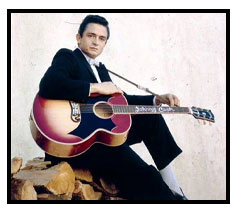 John R. Cash (born J. R. Cash; February 26, 1932 – September 12, 2003) was an American country singer-songwriter. Most of Cash's music contains themes of sorrow, moral tribulation, and redemption, especially songs from the later stages of his career. He was known for his deep, calm, bass-baritone voice, the distinctive sound of his Tennessee Three backing band that was characterized by its train-like chugging guitar rhythms, a rebelliousness coupled with an increasingly somber and humble demeanor, and his free prison concerts. Cash wore a trademark all-black stage wardrobe, which earned him the nickname as the "Man in Black". John R. Cash (born J. R. Cash; February 26, 1932 – September 12, 2003) was an American country singer-songwriter. Most of Cash's music contains themes of sorrow, moral tribulation, and redemption, especially songs from the later stages of his career. He was known for his deep, calm, bass-baritone voice, the distinctive sound of his Tennessee Three backing band that was characterized by its train-like chugging guitar rhythms, a rebelliousness coupled with an increasingly somber and humble demeanor, and his free prison concerts. Cash wore a trademark all-black stage wardrobe, which earned him the nickname as the "Man in Black".
Read more....>>>>
|
 |
|
|
 |
|
|
 |
I am an old-fashioned honest-to-goodness
flag-waving patriot.” John Wayne
 Marion Robert Morrison (May 26, 1907 – June 11, 1979), professionally known as John Wayne and nicknamed The Duke or Duke Wayne, was an American actor who became a popular icon through his starring roles in films which were produced during Hollywood's Golden Age, especially through his starring roles in Western and war movies. Marion Robert Morrison (May 26, 1907 – June 11, 1979), professionally known as John Wayne and nicknamed The Duke or Duke Wayne, was an American actor who became a popular icon through his starring roles in films which were produced during Hollywood's Golden Age, especially through his starring roles in Western and war movies.
His career flourished from the silent era of the 1920s through the American New Wave, as he appeared in a total of 179 film and television productions. He was among the top box-office draws for three decades, and appeared with many other important Hollywood stars of his era. In 1999, the American Film Institute selected Wayne as one of the greatest male stars of classic American cinema.
Read more.....>>>> |
 |
|
|
 |
 |
|
|
 |
Hank Williams (born September 17, 1923, Georgiana, Alabama, U.S.—died January 1, 1953, Oak Hill, West Virginia) American singer, 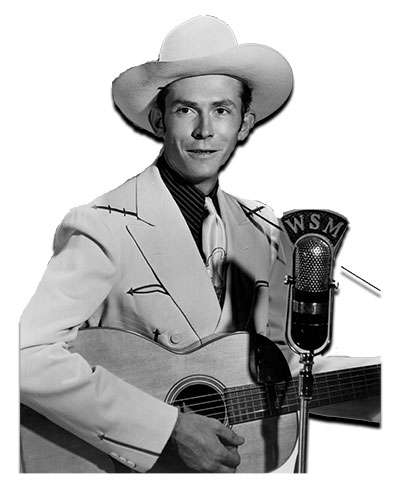 songwriter, and guitarist who in the 1950s arguably became country music’s first superstar. An immensely talented songwriter and an impassioned vocalist, he also experienced great crossover success in the popular music market. His iconic status was amplified by his death at age 29 and by his reputation for hard living and heart-on-the-sleeve vulnerability. songwriter, and guitarist who in the 1950s arguably became country music’s first superstar. An immensely talented songwriter and an impassioned vocalist, he also experienced great crossover success in the popular music market. His iconic status was amplified by his death at age 29 and by his reputation for hard living and heart-on-the-sleeve vulnerability.
In 1946 Williams landed a songwriting contract with Acuff-Rose Publications and began composing material for singer Molly O’Day. Later that year he received his first recording contract, with Sterling Records; however, it was on the start-up label MGM that he had his first hit, “Move It on Over” in 1947. Shortly thereafter he became a regular on the newly created Louisiana Hayride radio program based in Shreveport, Louisiana. His breakthrough moment came in 1949 with the release of “ Lovesick Blues,” an old show tune that Williams parlayed into a chart-topping hit, an invitation to join the Grand Ole Opry in Nashville, and international fame. |
 |
|
|
 |
 |
|
|
 |
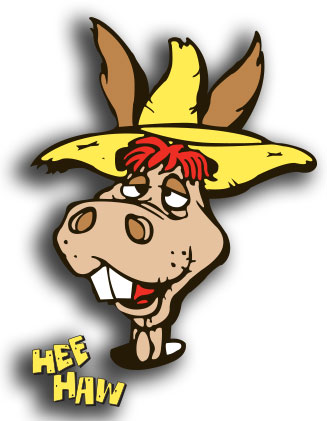 Hee Haw is an American television variety show featuring country music and humor with the fictional rural "Kornfield Kounty" as the backdrop. It aired from 1969 to 1993, and on TNN from 1996 to 1997. Hee Haw is an American television variety show featuring country music and humor with the fictional rural "Kornfield Kounty" as the backdrop. It aired from 1969 to 1993, and on TNN from 1996 to 1997.
Hee Haw's appeal, however, was not limited to a rural audience. It was successful in all of the major markets, including network-based Los Angeles and New York City, as well as Boston and Chicago. Other niche programs such as The Lawrence 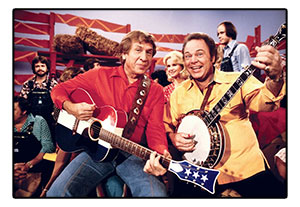 Welk Show and Soul Train, which targeted older and black audiences, respectively, also rose to prominence in syndication during the era. Like Laugh-In, the show minimized production costs by taping all of the recurring sketches for a season in batches, setting up the cornfield set one day, the joke fence on another, etc. At its peak, a season's worth of shows were recorded over the course of two separate, week-long shoots, and then assembled in the editing suite. Only musical performances were taped with a live audience. Welk Show and Soul Train, which targeted older and black audiences, respectively, also rose to prominence in syndication during the era. Like Laugh-In, the show minimized production costs by taping all of the recurring sketches for a season in batches, setting up the cornfield set one day, the joke fence on another, etc. At its peak, a season's worth of shows were recorded over the course of two separate, week-long shoots, and then assembled in the editing suite. Only musical performances were taped with a live audience.
Where, oh where, are you tonight?
Why did you leave me here all alone?
I searched the world over and thought I'd found true love,
You met another and PFFT! You was gone! |
 |
|
|
 |
|
|
 |
"Say, kids, what time is it?" Resounding from the peanut gallery—and from millions of television-watching kids around the country—came the reply, "It's Howdy Doody time!"
Howdy Doody is an American children's television program (with circus and Western frontier themes) that was created and produced by Victor F. Campbell and E. Roger Muir. It was broadcast on the NBC television network  in the United States from December 27, 1947, until September 24, 1960. in the United States from December 27, 1947, until September 24, 1960.
It was thus one of the first television shows with audience participation as a major component.
Howdy Doody is an American children's television program (with circus and Western frontier themes) that was created and produced by Victor F. Campbell and E. Roger Muir. It was broadcast on the NBC television network in the United States from December 27, 1947, until September 24, 1960. It was a pioneer of children's programming and set the pattern for many similar shows. One of the first television series produced at NBC in Rockefeller Center, in Studio 3A, it pioneered color production in 1956 and NBC (then owned by RCA Television) used the show to promote color television sets in the late 1950s.
Read more....>>>> |
 |
|
|
|
 |
|
|
 |
 Martin Luther King, Jr. (born January 15, 1929, Atlanta, Georgia, U.S.—died April 4, 1968, Memphis, Tennessee) Baptist minister and social activist who led the civil rights movement in the United States from the mid-1950s until his death by assassination in 1968. Martin Luther King, Jr. (born January 15, 1929, Atlanta, Georgia, U.S.—died April 4, 1968, Memphis, Tennessee) Baptist minister and social activist who led the civil rights movement in the United States from the mid-1950s until his death by assassination in 1968.
His leadership was fundamental to that movement’s success in ending the legal segregation of African Americans in the South and other parts of the United States. King rose to national prominence as head of the Southern Christian Leadership Conference, which promoted nonviolent tactics, such as the massive March on Washington (1963), to achieve civil rights. He was awarded the Nobel Peace Prize in 1964.
Read more..> |
 |
|
|
 |
 |
|
|
 |
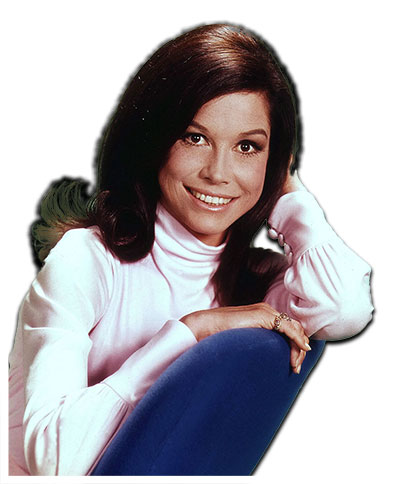 Mary Tyler Moore (December 29, 1936 – January 25, 2017) was an American actress, producer, and social advocate. She is best known for her roles on The Dick Van Dyke Show (1961–1966) and The Mary Tyler Moore Show (1970–1977), which "helped define a new vision of American womanhood" and "appealed to an audience facing the new trials of modern-day existence". Moore won seven Primetime Emmy Awards and three Golden Globe Awards. She was nominated for the Academy Award for Best Actress for her performance in Ordinary People. Mary Tyler Moore (December 29, 1936 – January 25, 2017) was an American actress, producer, and social advocate. She is best known for her roles on The Dick Van Dyke Show (1961–1966) and The Mary Tyler Moore Show (1970–1977), which "helped define a new vision of American womanhood" and "appealed to an audience facing the new trials of modern-day existence". Moore won seven Primetime Emmy Awards and three Golden Globe Awards. She was nominated for the Academy Award for Best Actress for her performance in Ordinary People.
Moore was diagnosed with type 1 diabetes in 1969. In 2011, she had surgery to remove a meningioma, a benign brain tumor. In 2014, friends reported that Moore had heart and kidney problems and was nearly blind from complications related to diabetes.
Moore died at the age of 80 on January 25, 2017, at Greenwich Hospital in Greenwich, Connecticut, from cardiopulmonary arrest complicated by pneumonia after having been placed on a ventilator the week before. |
 |
|
|
 |
|
|
 |
Merle Ronald Haggard (April 6, 1937 – April 6, 2016) was an American country music singer, songwriter, guitarist, and fiddler.
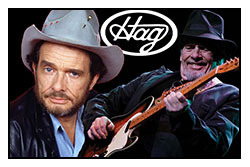 Few artists have matched the impact that Merle Haggard has had on country music as both a singer and writer. Hank Williams, perhaps. Maybe Jimmie Rodgers or Bill Monroe. Few artists have matched the impact that Merle Haggard has had on country music as both a singer and writer. Hank Williams, perhaps. Maybe Jimmie Rodgers or Bill Monroe.
In a genre where performers and writers often are separated into distinct camps, Haggard has written the lion's share of his hits, and nearly all of the greatest ones--among them classics like "Swinging Doors," "The Bottle Let Me Down," "Mama Tried" and "Hungry Eyes."
Born April 6, 1937 in Bakersfield, California, Haggard had a childhood filled with the same kind of hardships that his songs would later contain. He lived part of childhood in a converted boxcar. He spent three years in San Quentin for burglary (California governor Ronald Reagan pardoned him in 1972).
Read more....>>>> |
 |
|
|
|
|
 |
|
|
 |
22 February 1980, Lake Placid, New York, USA
Great moments are born from great opportunity.
And that's what you have here tonight, boys.
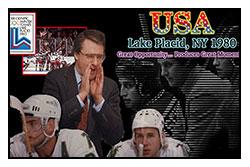 That's what you've earned here, tonight. One game. That's what you've earned here, tonight. One game.
If we played 'em ten times, they might win nine. But not this game. Not tonight.
Tonight, we skate with 'em.
Tonight, we stay with 'em, and we shut them down because we can!
Tonight, we are the greatest hockey team in the world.
You were born to be hockey players -- every one of ya.
And you were meant to be here tonight.
This is your time.
Their time -- is done. It's over.
I'm sick and tired of hearin' about what a great hockey team the Soviets have. Screw 'em!
This is your time!!
Now go out there and take it!
Read more....>>>
|
 |
|
|
 |
|
|
 |
Neil Armstrong (born August 5, 1930, Wapakoneta, Ohio, U.S.—died August 25, 2012, Cincinnati, Ohio) was a U.S. astronaut, and the first person to set foot on the Moon.
 Neil Armstrong was the eldest of three children born to Viola Louise Engel and Stephen Koenig Armstrong, a state auditor. Neil Armstrong was the eldest of three children born to Viola Louise Engel and Stephen Koenig Armstrong, a state auditor.
Neil’s passion for aviation and flight was kindled when he took his first airplane ride at age 6. He was active in the Boy Scouts of America and earned the rank of Eagle Scout, the highest rank attainable. He became a licensed pilot on his 16th birthday and a naval air cadet in 1947. His studies in aeronautical engineering at Purdue University in West Lafayette, Indiana, were interrupted in 1950 by his service in the Korean War, during which he was shot down once and was awarded three Air Medals. He completed his degree in 1955 and immediately became a civilian research pilot for the National Advisory Committee for Aeronautics (NACA), later the National Aeronautics and Space Administration (NASA). He flew more than 1,100 hours, testing various supersonic fighters as well as the X-15 rocket plane.
Read more....>>> |
 |
|
|
 |
|
|
 |
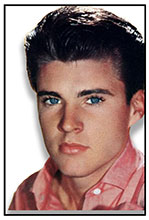 Rick Nelson (born May 8, 1940, -- December 31, 1985, De Kalb, Texas) American singer and actor, one of rock music’s first teen idols. Nelson gained fame on his parents’ television series, The Adventures of Ozzie and Harriet, which embodied middle-American values in the 1950s and early ’60s. Rick Nelson (born May 8, 1940, -- December 31, 1985, De Kalb, Texas) American singer and actor, one of rock music’s first teen idols. Nelson gained fame on his parents’ television series, The Adventures of Ozzie and Harriet, which embodied middle-American values in the 1950s and early ’60s.
At age 17, in 1957, he recorded a hit version of Fats Domino’s “I’m Walkin’.” Trading on his handsome wholesome television image, Nelson launched a recording career that resulted in a bevy of Top Ten hits and contributed to rock and roll’s mainstream acceptance. Yet, unlike Frankie Avalon and other teen idols who found fame on American Bandstand, Nelson created boisterous rockabilly-flavoured rock and roll as well as gentler ballads. |
 |
|
|
|
 |
|
|
 |
 |
George Reeves (January 5, 1914 – June 16, 1959) was an American actor.
Reeves was born with the name of George Keefer Brewer in Woolstock, Iowa, U.S., son of Don Brewer and Helen Lescher. Reeves started acting in high school and then continued to serve on student productions. In 1943, 17 months after the attack on Pearl Harbor, Reeves enrolled in aviation until the 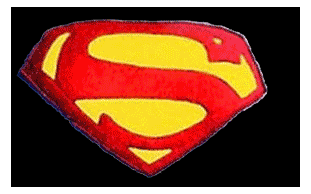 end of World War II, putting his acting career on hold. end of World War II, putting his acting career on hold.
After a successful career, Reeves died on June 16, 1959. However, the manner of death is controversial. He was officially found to have committed suicide, but some people think he was murdered or a shooting victim.
Read more....>>> |
|
 |
|
|
 |
 |
|
|
 Donald John Trump was born in Queens, New York, on June 14, 1946. His father, Fred Trump was a successful real estate developer. Trump was educated at the New York Military Academy and the Wharton School of Finance and Commerce at the University of Pennsylvania. In 1971, he took over his father’s real estate company, renaming it the Trump Organization. Donald John Trump was born in Queens, New York, on June 14, 1946. His father, Fred Trump was a successful real estate developer. Trump was educated at the New York Military Academy and the Wharton School of Finance and Commerce at the University of Pennsylvania. In 1971, he took over his father’s real estate company, renaming it the Trump Organization.  The business soon became involved in variety of projects, including hotels, resorts, residential and commercial building, casinos, and golf courses. His first of many books was The Art of the Deal, published in 1987. In 2004, he launched the reality television show The Apprentice. The business soon became involved in variety of projects, including hotels, resorts, residential and commercial building, casinos, and golf courses. His first of many books was The Art of the Deal, published in 1987. In 2004, he launched the reality television show The Apprentice.
Read more....>>>
|
 |
|
|
|
 |
|
 Gary Alan Sinise (Lt. Dan) (born March 17, 1955) is an American actor of stage and screen, as well as a director. Gary Alan Sinise (Lt. Dan) (born March 17, 1955) is an American actor of stage and screen, as well as a director.
He is a supporter of various veterans' organizations and founded the Lt. Dan Band (named after his character in Forrest Gump), which plays at military bases around the world The Lt. Dan Band is an American cover band originally formed in Chicago in 2003 by Gary Sinise and Kimo Williams to perform at USO shows, entertain troops, and raise money for disabled veterans. The band is named after the character Lieutenant Dan Taylor, whom Sinise portrayed in the film Forrest Gump. Sinise has said in interviews that many people know him by sight as "Lieutenant Dan" rather than by his real name, hence the band's name. The concept came about when Sinise asked for permission to bring musicians on his USO tours. The group was initially known as "Gary Sinise and the Lt. Dan Band".
Read more......>>> |
 |
|
|
 |
 |
|
|
 |
 Welcome Home to VSPA! I am writing to you on behalf of the membership of the Vietnam Security Police Association, Inc. (USAF). A thousand plus, and still growing, we extend our sincere appreciation to all who strive to preserve our history and honor our 111 fallen brothers. Welcome Home to VSPA! I am writing to you on behalf of the membership of the Vietnam Security Police Association, Inc. (USAF). A thousand plus, and still growing, we extend our sincere appreciation to all who strive to preserve our history and honor our 111 fallen brothers.
VSPA was formed for many reasons: to reunite friends, VSPA was formed for many reasons: to reunite friends, to preserve the memory of our fallen brothers, the history of our service in Vietnam, and to ensure that the hard lessons learned in Vietnam and Thailand would not be forgotten. Lessons of life and death, forged in war, tempered in battle, that when remembered will provide inspiration to Airmen who are yet to taste combat defending the fortress, and pride for those who have fought and bled with us.
Welcome Home to a very special brotherhood. You may have enjoyed web page stories and photos of bases and squadrons we served at during the Vietnam War. |
|
 |
|
|
| |
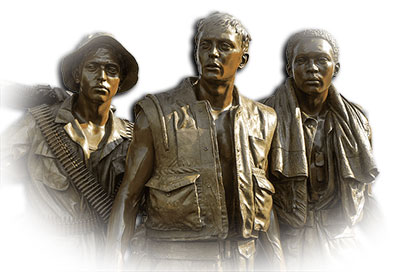 The Wall: Of the 2.7 million Americans who served in the Vietnam war, 304,000 were wounded in action, and 75,000 were disabled. Of the casualties listed on The Wall, approximately 1,300 remain missing in action. The Wall: Of the 2.7 million Americans who served in the Vietnam war, 304,000 were wounded in action, and 75,000 were disabled. Of the casualties listed on The Wall, approximately 1,300 remain missing in action. |
|
 |
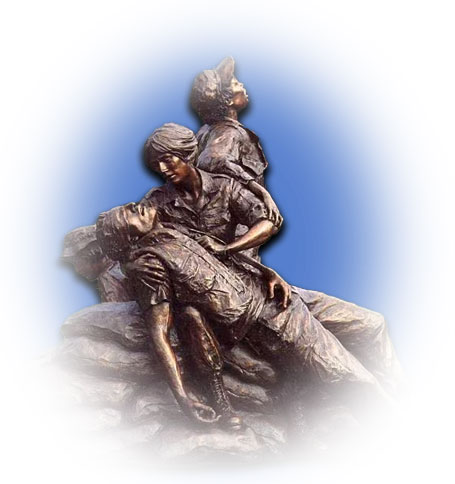 Vietnam Veterans Memorial, national monument in Washington, D.C., honouring members of the U.S. armed forces who served and died in the Vietnam War (1955–75). The memorial, located near the western end of the Mall, is a black granite V-shaped wall inscribed with the names of the approximately 58,000 men and women who were killed or missing in action. It was designed by American architect Maya Lin. Vietnam Veterans Memorial, national monument in Washington, D.C., honouring members of the U.S. armed forces who served and died in the Vietnam War (1955–75). The memorial, located near the western end of the Mall, is a black granite V-shaped wall inscribed with the names of the approximately 58,000 men and women who were killed or missing in action. It was designed by American architect Maya Lin.
Read more.....>> |
 |
Heavy Heart ...
 I remember the biting cold as I stepped from my car. I looked toward the National Vietnam Veterans Memorial, and walked with the growing crowd. I saw people clustered from one end to the other of the Memorial ... The Wall. Read More---->>> I remember the biting cold as I stepped from my car. I looked toward the National Vietnam Veterans Memorial, and walked with the growing crowd. I saw people clustered from one end to the other of the Memorial ... The Wall. Read More---->>>
|
|
 |
The Power of a Name by: Valerie
The Castilleja School Palo Alto, CA © 1999
 I never really imagined that a name could have so much meaning. Walking along the Vietnam Veteran’s Memorial I was faced with thousands of names belonging to thousands of people who had each given their lives for our country. I stood there, surrounded by spectators, all quiet in respect and honor, but the personal meaning didn’t reach any deeper than the engraved letters on the wall. To me they were just labels, not the true souls that they represented. I had never known the soldiers who had lost their lives; I hadn’t even been alive to experience the war. Read More---->>> I never really imagined that a name could have so much meaning. Walking along the Vietnam Veteran’s Memorial I was faced with thousands of names belonging to thousands of people who had each given their lives for our country. I stood there, surrounded by spectators, all quiet in respect and honor, but the personal meaning didn’t reach any deeper than the engraved letters on the wall. To me they were just labels, not the true souls that they represented. I had never known the soldiers who had lost their lives; I hadn’t even been alive to experience the war. Read More---->>> |
| |
 |
|
|



![]()

 For God so loved the world, that he gave his only begotten Son, that whosoever believeth in him should not perish, but have everlasting life.... John 3:16
For God so loved the world, that he gave his only begotten Son, that whosoever believeth in him should not perish, but have everlasting life.... John 3:16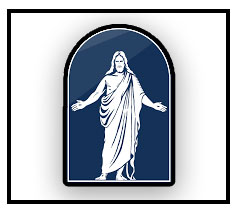
 Jesus Christ plays a central role in our beliefs and in our lives. Our mission is to invite all of God’s children to follow Jesus and experience the joy that is possible because of Him.
Jesus Christ plays a central role in our beliefs and in our lives. Our mission is to invite all of God’s children to follow Jesus and experience the joy that is possible because of Him.  Dad was a very hard worker always doing something and doing it very well. I can remember watching him build a project with no plans or supply list. When he would start a project, he always had the blueprint in his head. I was always amazed when he finished the job, there were no scraps. It didn’t matter if it was concrete work, brick, carpentry or metal, dad knew how to do
Dad was a very hard worker always doing something and doing it very well. I can remember watching him build a project with no plans or supply list. When he would start a project, he always had the blueprint in his head. I was always amazed when he finished the job, there were no scraps. It didn’t matter if it was concrete work, brick, carpentry or metal, dad knew how to do What can I say about my brothers. I was very blessed to have my brother Ray, Don, and Jerry. From Ray rescuing me from a cliff in Apple Valley California. And, watching him being able to do anything. Don for spending time with him in a patrol car keeping citizens safe. And Jerry being there when I got in trouble and getting me out of in. Having a bedroom that was named THE J&L RANCH.
What can I say about my brothers. I was very blessed to have my brother Ray, Don, and Jerry. From Ray rescuing me from a cliff in Apple Valley California. And, watching him being able to do anything. Don for spending time with him in a patrol car keeping citizens safe. And Jerry being there when I got in trouble and getting me out of in. Having a bedroom that was named THE J&L RANCH.  Us, Boys spent many - many quarters on this ride and others. When Don went into the Air Force Dad kept us out of school and we spent the whole day there.
Us, Boys spent many - many quarters on this ride and others. When Don went into the Air Force Dad kept us out of school and we spent the whole day there. 




 In 1968, Americans were asking, "Do you know the way to San
Jose?" as Diane Warwicke serenading this great land of ours
with her songs. I never made it to San Jose, but Uncle Sam
showed me the way to Fort Ord, California.
In 1968, Americans were asking, "Do you know the way to San
Jose?" as Diane Warwicke serenading this great land of ours
with her songs. I never made it to San Jose, but Uncle Sam
showed me the way to Fort Ord, California.  I thought from the day I saw her I noticed her humor and her love for life. Andi was my 1st only wife although we got a divorce, she had been a wonderful mother to our children. I watch her conquering nursing school and become a wonderful nurse. We had four wonderful children together, each of our children was very much wanted in our lives. Andi wherever you are I wish you the best of luck and love.
I thought from the day I saw her I noticed her humor and her love for life. Andi was my 1st only wife although we got a divorce, she had been a wonderful mother to our children. I watch her conquering nursing school and become a wonderful nurse. We had four wonderful children together, each of our children was very much wanted in our lives. Andi wherever you are I wish you the best of luck and love.  Ann came into my life in the late 80’s. Our friendship goes with out saying. Ann is one of a kind. Her love for family and God is what make her stand out among others. Ann passion for the well-being of others is unmatchable.
Ann came into my life in the late 80’s. Our friendship goes with out saying. Ann is one of a kind. Her love for family and God is what make her stand out among others. Ann passion for the well-being of others is unmatchable.  Susan, well she can light up any room or make anyone smile. Just being around, she shines a light on your day. She always finds a silver light in all things.
Susan, well she can light up any room or make anyone smile. Just being around, she shines a light on your day. She always finds a silver light in all things.  Abbott and Costello were an American comedy duo composed of comedians Bud Abbott and Lou Costello, whose work in radio, film, and television made them the most popular comedy team of the 1940s and 1950s, and the highest-paid entertainers in the world during the Second World War. Their patter routine "Who's on First?" is considered one of the greatest comedy routines of all time, a version of which appears in their 1945 film The Naughty Nineties.
Abbott and Costello were an American comedy duo composed of comedians Bud Abbott and Lou Costello, whose work in radio, film, and television made them the most popular comedy team of the 1940s and 1950s, and the highest-paid entertainers in the world during the Second World War. Their patter routine "Who's on First?" is considered one of the greatest comedy routines of all time, a version of which appears in their 1945 film The Naughty Nineties. 
 Asa "Al Jolson" Yoelson
Asa "Al Jolson" Yoelson Annette Funicello
Annette Funicello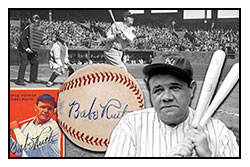 George Herman "Babe" Ruth (February 6, 1895 – August 16, 1948) was an American professional baseball player whose career in Major League Baseball (MLB) spanned 22 seasons, from 1914 through 1935. Nicknamed "the Bambino" and "the Sultan of Swat", he began his MLB career as a star left-handed pitcher for the Boston Red Sox, but achieved his greatest fame as a slugging outfielder for the New York Yankees.
George Herman "Babe" Ruth (February 6, 1895 – August 16, 1948) was an American professional baseball player whose career in Major League Baseball (MLB) spanned 22 seasons, from 1914 through 1935. Nicknamed "the Bambino" and "the Sultan of Swat", he began his MLB career as a star left-handed pitcher for the Boston Red Sox, but achieved his greatest fame as a slugging outfielder for the New York Yankees.  Leslie Townes "Bob" Hope (May 29, 1903 – July 27, 2003) was a British-born.
Leslie Townes "Bob" Hope (May 29, 1903 – July 27, 2003) was a British-born.  Presenting the Distinguished Service Medal to Hope in 1946, Past National Commander John R. Quinn called the entertainer "the personal jester of every man and woman in uniform ... Wherever they were - in foxhole, Quonset hut, jungle or warship - he administered the toxin of cheer and laughter. ... He has flown one-half million miles to perform in the din of the front lines as well as in the hush of hospitals."
Presenting the Distinguished Service Medal to Hope in 1946, Past National Commander John R. Quinn called the entertainer "the personal jester of every man and woman in uniform ... Wherever they were - in foxhole, Quonset hut, jungle or warship - he administered the toxin of cheer and laughter. ... He has flown one-half million miles to perform in the din of the front lines as well as in the hush of hospitals." Charles Hardin Holley (September 7, 1936 – February 3, 1959), known as Buddy Holly, was an American singer and songwriter who was a central and pioneering figure of mid-1950s rock and roll. He was born to a musical family in Lubbock, Texas, during the Great Depression, and learned to play guitar and sing alongside his siblings. Holly's style was influenced by gospel music, country music, and rhythm and blues acts, which he performed in Lubbock with his friends from high school.
Charles Hardin Holley (September 7, 1936 – February 3, 1959), known as Buddy Holly, was an American singer and songwriter who was a central and pioneering figure of mid-1950s rock and roll. He was born to a musical family in Lubbock, Texas, during the Great Depression, and learned to play guitar and sing alongside his siblings. Holly's style was influenced by gospel music, country music, and rhythm and blues acts, which he performed in Lubbock with his friends from high school.  Doris Day (born Doris Mary Anne Kappelhoff; April 3, 1922 – May 13, 2019)
Doris Day (born Doris Mary Anne Kappelhoff; April 3, 1922 – May 13, 2019)
 Elizabeth Victoria Montgomery (April 15, 1933 – May
Elizabeth Victoria Montgomery (April 15, 1933 – May  Elvis Presley (born January 8, 1935, Tupelo, Mississippi, U.S.—died August 16, 1977, Memphis, Tennessee)
Elvis Presley (born January 8, 1935, Tupelo, Mississippi, U.S.—died August 16, 1977, Memphis, Tennessee)  Orvon Grover "Gene" Autry (September 29, 1907 – October 2, 1998) The next year
Orvon Grover "Gene" Autry (September 29, 1907 – October 2, 1998) The next year  Henry John Deutschendorf Jr. (December 31, 1943 – October 12, 1997), known professionally as John Denver, was an American singer and songwriter. He was one of the most popular acoustic artists of the 1970s and one of the best-selling artists in that decade. AllMusic has called Denver "among the most beloved entertainers of his era".
Henry John Deutschendorf Jr. (December 31, 1943 – October 12, 1997), known professionally as John Denver, was an American singer and songwriter. He was one of the most popular acoustic artists of the 1970s and one of the best-selling artists in that decade. AllMusic has called Denver "among the most beloved entertainers of his era". John R. Cash (born J. R. Cash; February 26, 1932 – September 12, 2003) was an American country singer-songwriter. Most of Cash's music contains themes of sorrow, moral tribulation, and redemption, especially songs from the later stages of his career. He was known for his deep, calm, bass-baritone voice, the distinctive sound of his Tennessee Three backing band that was characterized by its train-like chugging guitar rhythms, a rebelliousness coupled with an increasingly somber and humble demeanor, and his free prison concerts. Cash wore a trademark all-black stage wardrobe, which earned him the nickname as the "Man in Black".
John R. Cash (born J. R. Cash; February 26, 1932 – September 12, 2003) was an American country singer-songwriter. Most of Cash's music contains themes of sorrow, moral tribulation, and redemption, especially songs from the later stages of his career. He was known for his deep, calm, bass-baritone voice, the distinctive sound of his Tennessee Three backing band that was characterized by its train-like chugging guitar rhythms, a rebelliousness coupled with an increasingly somber and humble demeanor, and his free prison concerts. Cash wore a trademark all-black stage wardrobe, which earned him the nickname as the "Man in Black".  Marion Robert Morrison (May 26, 1907 – June 11, 1979), professionally known as John Wayne and nicknamed The Duke or
Marion Robert Morrison (May 26, 1907 – June 11, 1979), professionally known as John Wayne and nicknamed The Duke or 
 Hee Haw is an American television variety show featuring country music and humor with the fictional rural "Kornfield Kounty" as the backdrop. It aired from 1969 to 1993, and on TNN from 1996 to 1997.
Hee Haw is an American television variety show featuring country music and humor with the fictional rural "Kornfield Kounty" as the backdrop. It aired from 1969 to 1993, and on TNN from 1996 to 1997.  Welk Show and Soul Train, which targeted older and black audiences, respectively, also rose to prominence in syndication during the era. Like Laugh-In, the show minimized production costs by taping all of the recurring sketches for a season in batches, setting up the cornfield set one day, the joke fence on another, etc. At its peak, a season's worth of shows were recorded over the course of two separate, week-long shoots, and then assembled in the editing suite. Only musical performances were taped with a live audience.
Welk Show and Soul Train, which targeted older and black audiences, respectively, also rose to prominence in syndication during the era. Like Laugh-In, the show minimized production costs by taping all of the recurring sketches for a season in batches, setting up the cornfield set one day, the joke fence on another, etc. At its peak, a season's worth of shows were recorded over the course of two separate, week-long shoots, and then assembled in the editing suite. Only musical performances were taped with a live audience. in the United States from December 27, 1947, until September 24, 1960.
in the United States from December 27, 1947, until September 24, 1960.  Mac Davis, Pop and Country Singing Star, Is Dead at 78
Mac Davis, Pop and Country Singing Star, Is Dead at 78  Martin Luther King, Jr. (born January 15, 1929, Atlanta, Georgia, U.S.—died April 4,
Martin Luther King, Jr. (born January 15, 1929, Atlanta, Georgia, U.S.—died April 4, 
 Few artists have matched the impact that Merle Haggard has had on country music as both a singer and writer. Hank Williams, perhaps. Maybe Jimmie Rodgers or Bill Monroe.
Few artists have matched the impact that Merle Haggard has had on country music as both a singer and writer. Hank Williams, perhaps. Maybe Jimmie Rodgers or Bill Monroe. 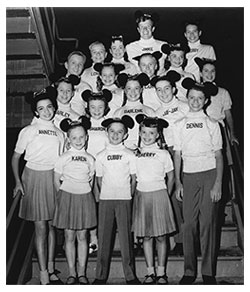 was the most anticipated children's programming ever. The Mickey Mouse Club is a classic variety show from the 1950s. The children's program features the famous Mouseketeers, led by Jimmie and Roy, who entertain with song and dance numbers. The show also highlights educational newsreels about children around the world, as well as animated cartoons, often with Mickey Mouse himself. This program is presented as originally created. It may contain outdated cultural depictions.
was the most anticipated children's programming ever. The Mickey Mouse Club is a classic variety show from the 1950s. The children's program features the famous Mouseketeers, led by Jimmie and Roy, who entertain with song and dance numbers. The show also highlights educational newsreels about children around the world, as well as animated cartoons, often with Mickey Mouse himself. This program is presented as originally created. It may contain outdated cultural depictions.  stereotypes. The tradition reached its zenith between 1850 and 1870. Although the form gradually disappeared from the professional theatres and became purely a vehicle for amateurs, its influence endured—in vaudeville, radio, and television as well as in the motion-picture and world-music industries of the 20th and 21st centuries.
stereotypes. The tradition reached its zenith between 1850 and 1870. Although the form gradually disappeared from the professional theatres and became purely a vehicle for amateurs, its influence endured—in vaudeville, radio, and television as well as in the motion-picture and world-music industries of the 20th and 21st centuries.  That's what you've earned here, tonight. One game.
That's what you've earned here, tonight. One game. Neil Armstrong was the eldest of three children born to Viola Louise Engel and Stephen Koenig Armstrong, a state auditor.
Neil Armstrong was the eldest of three children born to Viola Louise Engel and Stephen Koenig Armstrong, a state auditor.  Rick Nelson (born May 8, 1940, -- December 31, 1985, De Kalb, Texas) American singer and actor, one of rock music’s first teen idols. Nelson gained fame on his parents’ television series, The Adventures of Ozzie and Harriet, which embodied middle-American values in the 1950s and early ’60s
Rick Nelson (born May 8, 1940, -- December 31, 1985, De Kalb, Texas) American singer and actor, one of rock music’s first teen idols. Nelson gained fame on his parents’ television series, The Adventures of Ozzie and Harriet, which embodied middle-American values in the 1950s and early ’60s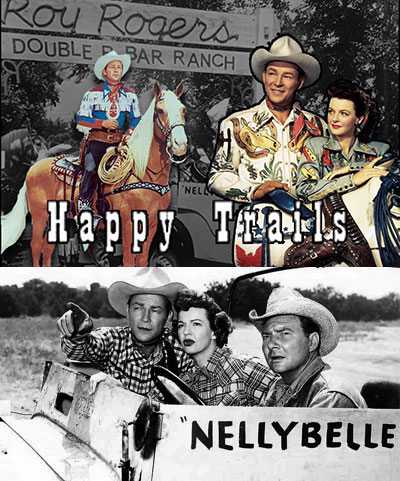 "The Roy Rogers Show," starring Roy Rogers, King of the Cowboys; Trigger, his golden palomino; and Dale Evans, Queen of the West; with Pat Brady, his comical sidekick; and Roy's wonder dog, Bullet.
"The Roy Rogers Show," starring Roy Rogers, King of the Cowboys; Trigger, his golden palomino; and Dale Evans, Queen of the West; with Pat Brady, his comical sidekick; and Roy's wonder dog, Bullet.  end of World War II, putting his acting career on hold.
end of World War II, putting his acting career on hold. 


 Donald John Trump was born in Queens, New York, on June 14, 1946. His father, Fred Trump was a successful real estate developer. Trump was educated at the New York Military Academy and the Wharton School of Finance and Commerce at the University of Pennsylvania. In 1971, he took over his father’s real estate company, renaming it the Trump Organization.
Donald John Trump was born in Queens, New York, on June 14, 1946. His father, Fred Trump was a successful real estate developer. Trump was educated at the New York Military Academy and the Wharton School of Finance and Commerce at the University of Pennsylvania. In 1971, he took over his father’s real estate company, renaming it the Trump Organization.  The business soon became involved in variety of projects, including hotels, resorts, residential and commercial building, casinos, and golf courses. His first of many books was The Art of the Deal, published in 1987. In 2004, he launched the reality television show The Apprentice.
The business soon became involved in variety of projects, including hotels, resorts, residential and commercial building, casinos, and golf courses. His first of many books was The Art of the Deal, published in 1987. In 2004, he launched the reality television show The Apprentice.  Ronald Reagan, originally an American actor and politician, became the 40th President of the United States serving from 1981 to 1989. His term saw a restoration of prosperity at home, with the goal of achieving “peace through strength” abroad.
Ronald Reagan, originally an American actor and politician, became the 40th President of the United States serving from 1981 to 1989. His term saw a restoration of prosperity at home, with the goal of achieving “peace through strength” abroad.  innovative program known as the Reagan Revolution, which aimed to reinvigorate the American people and reduce their reliance upon Government. He felt he had fulfilled his campaign pledge of 1980 to restore “the great, confident roar of American progress and growth and optimism.”
innovative program known as the Reagan Revolution, which aimed to reinvigorate the American people and reduce their reliance upon Government. He felt he had fulfilled his campaign pledge of 1980 to restore “the great, confident roar of American progress and growth and optimism.” Gary Alan Sinise (Lt. Dan) (born March 17, 1955) is an American actor of stage and screen, as well as a director.
Gary Alan Sinise (Lt. Dan) (born March 17, 1955) is an American actor of stage and screen, as well as a director. 


 The Wall: Of the 2.7 million Americans who served in the Vietnam war, 304,000 were wounded in action, and 75,000 were disabled. Of the casualties listed on The Wall, approximately 1,300 remain missing in action.
The Wall: Of the 2.7 million Americans who served in the Vietnam war, 304,000 were wounded in action, and 75,000 were disabled. Of the casualties listed on The Wall, approximately 1,300 remain missing in action. Vietnam Veterans Memorial, national monument in Washington, D.C., honouring members of the U.S. armed forces who served and died in the Vietnam War (1955–75). The memorial, located near the western end of the Mall, is a black granite V-shaped wall inscribed with the names of the approximately 58,000 men and women who were killed or missing in action. It was designed by American architect Maya Lin.
Vietnam Veterans Memorial, national monument in Washington, D.C., honouring members of the U.S. armed forces who served and died in the Vietnam War (1955–75). The memorial, located near the western end of the Mall, is a black granite V-shaped wall inscribed with the names of the approximately 58,000 men and women who were killed or missing in action. It was designed by American architect Maya Lin. 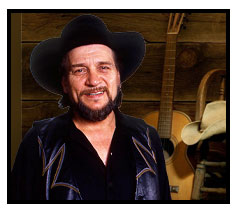 By age 12, Waylon Jennings was playing in a band and working as a radio DJ. His style evolved over time, taking on a tougher, more bass-driven sound. He befriended such artists as Willie Nelson, and formed the Highwaymen with Nelson, Johnny Cash and Kris Kristofferson in 1985. By the time of his death, Jennings had become a country music superstar.
By age 12, Waylon Jennings was playing in a band and working as a radio DJ. His style evolved over time, taking on a tougher, more bass-driven sound. He befriended such artists as Willie Nelson, and formed the Highwaymen with Nelson, Johnny Cash and Kris Kristofferson in 1985. By the time of his death, Jennings had become a country music superstar. 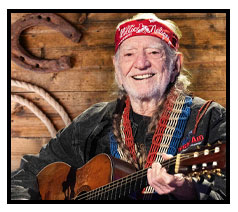 Nelson learned to play guitar from his grandfather and at the age of 10 was performing at local dances. He served in the U.S. Air Force before becoming a disc jockey in Texas, Oregon, and California during the 1950s. Ray Price was among the first of dozens of country, rhythm-and-blues, and popular singers to achieve hit records with Nelson’s 1960s tunes, which included the standards “Hello Walls,” “Night Life,” “Funny How Time Slips Away,” and, most famously, “Crazy.” By contrast, Nelson achieved only modest success as a singer in that decade.
Nelson learned to play guitar from his grandfather and at the age of 10 was performing at local dances. He served in the U.S. Air Force before becoming a disc jockey in Texas, Oregon, and California during the 1950s. Ray Price was among the first of dozens of country, rhythm-and-blues, and popular singers to achieve hit records with Nelson’s 1960s tunes, which included the standards “Hello Walls,” “Night Life,” “Funny How Time Slips Away,” and, most famously, “Crazy.” By contrast, Nelson achieved only modest success as a singer in that decade.